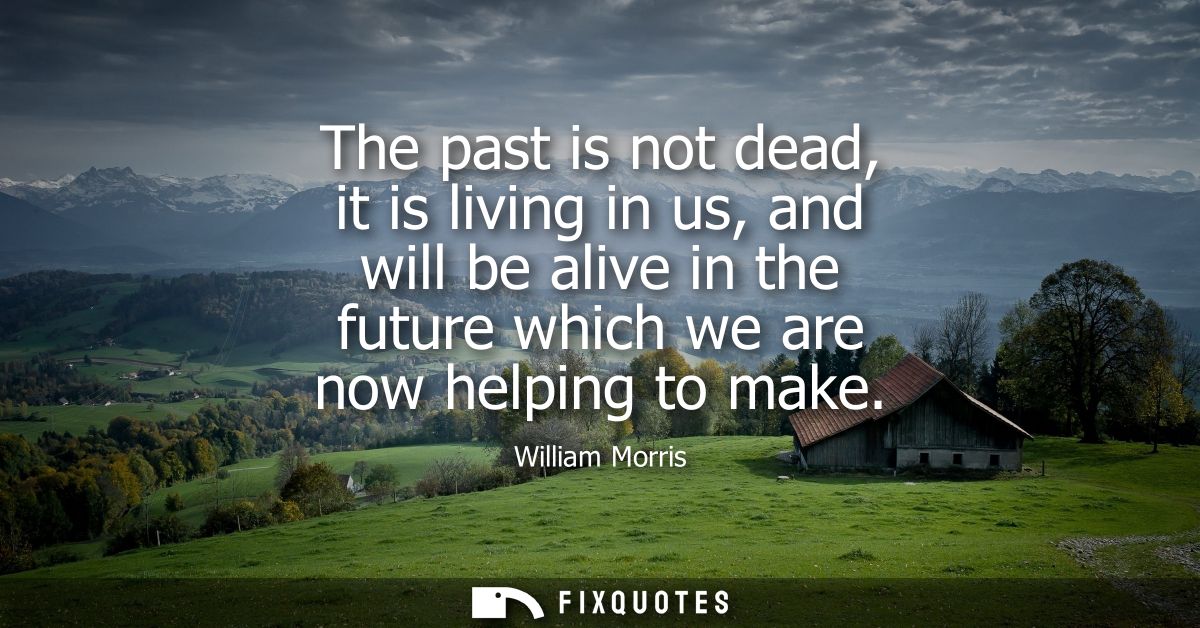"The past is not dead, it is living in us, and will be alive in the future which we are now helping to make"
About this Quote
William Morris’s assertion that “The past is not dead, it is living in us, and will be alive in the future which we are now helping to make” draws attention to the enduring influence of history on contemporary life and future trajectories. Rather than viewing the past as a distant epoch, sealed off from our experiences, Morris suggests it continues to exist through our traditions, beliefs, and even subconscious attitudes. Every action, decision, and idea echo with past experiences, mistakes, and achievements. Our cultural inheritance, ethics, and even daily habits are shaped by the accumulation of choices made by preceding generations. Rather than a static archive, the past remains dynamic and interwoven into the fabric of present reality.
By emphasizing that the past “is living in us,” Morris highlights the way inherited knowledge and customs inform our identity. Individuals and societies act as vessels carrying forward the legacies, memories, and lessons that time bestows. Whether it’s in art, language, or societal structures, the strains of history resound in contemporary existence. This ongoing presence of the past challenges us to acknowledge the responsibility we bear for interpreting and sometimes re-evaluating what we have inherited.
Further, Morris’s observation that it “will be alive in the future which we are now helping to make” underscores the creative yet consequential interplay between today’s actions and tomorrow’s world. The choices made in the present are forms of active dialogue with tradition and precedent. As architects of the future, people are both shaped by what came before and contributors to what is yet to come. Every decision reframes or reaffirms the story that unfolds after us.
Thus, the continuity Morris describes is both warning and opportunity: we cannot renounce the past, but we can shape its legacy. By understanding how the past persists through us, we become more conscious of our role in shaping a future for others, bridging generations with intent and awareness.
More details
About the Author

